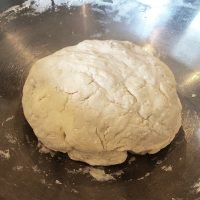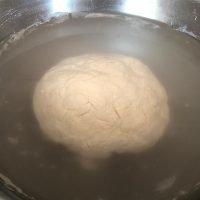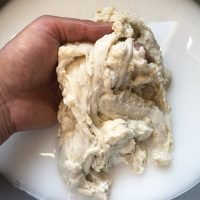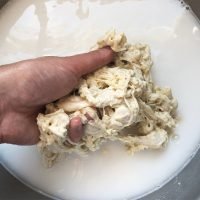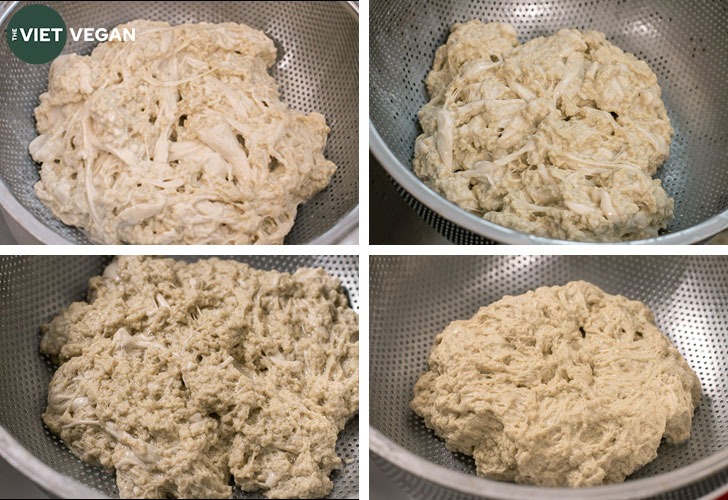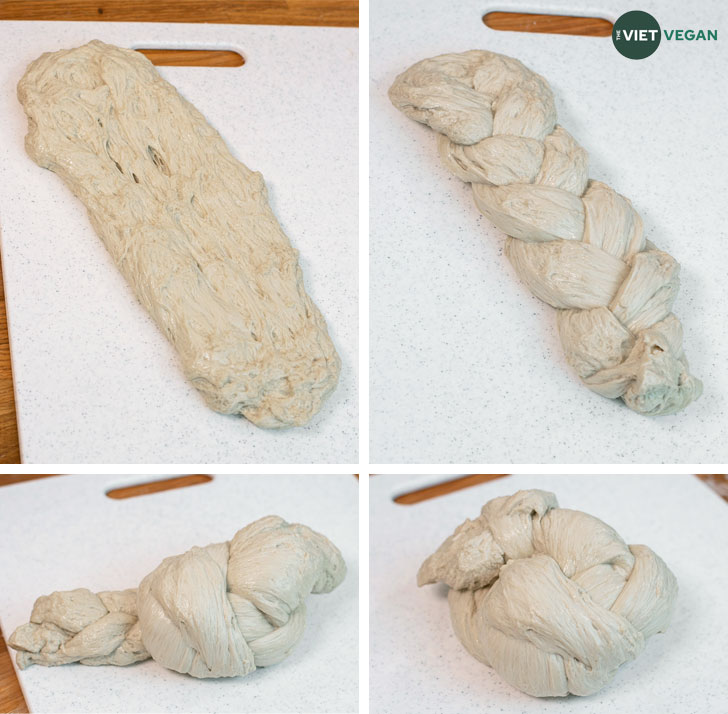Wash the flour method is a way to make Seitan from high-gluten flour.
Ingredients
| Ingredient | Notes | Quantity |
|---|---|---|
| Flour | High-gluten (>=11% protein) | 3 parts |
| Water | 1 part |
Steps
Combine ingredients
Place the ball of dough in a bowl and cover it with cool water for at least 1 hour, but not longer than 8-10.
Start washing!
At this point move the bowl to the sink and grab a colander. Discard the water covering the dough and fill the bowl again with cool, clean water. As the new water fills the bowl, begin stretching and kneading the dough. Keeping your hands and dough in the bowl of water, continue kneading and stretching until the water becomes very opaque.
Dump out your milky water, using a colander to catch the dough ball and any stray pieces
Cover your dough ball again, this time using luke-warm water, and continue to stretch and knead until the water becomes opaque again. Alternating cool and warm water affects how the dough breaks apart and comes back together again. The goal of this is to hopefully lessen the amount of times you need to wash. However, you can do all cool water and get the same result. It is not recommended to use water that is too warm or hot, because your dough can become stickier or more gluey and harder to work with.
Repeat steps 3 and 4
(Le 2021)
You will likely need to repeat this process at least few times. You will see the dough begin to look more stringy and feel a little “squeaky” between your fingers. The more starch you wash out, the more chewy your seitan will become, so the end result is up to you.
[…]
Wash until the water is at least a little bit cloudy.
Once you have finished washing to your desired level of water clarity, let the dough rest in the colander for at least 20 minutes
This is to both drain the excess water and let the strands begin to develop. If you are adding additional spices or proteins, proceed to step [7]. If you are not, you should let it rest even longer until the gluten becomes very elastic and you are able to stretch it far without it breaking.
(optional) Add in seasonings
A good rule of thumb if adding proteins or liquids is to only add about 2oz to this size dough ball so your seitan does not become too soft. I prefer just adding in dry spices to keep the texture chewier, but you can also add liquids such as soy sauce or liquid smoke to boost flavor, and/or additional proteins such as tofu or beans to soften the texture of your final result and also make your seitan a complete protein. My preferred method for incorporating them is to use a food processor, but you can also cut them into the dough or knead them in by hand. Then you will need to let the dough rest again until it starts to come back together and become more elastic and stretchy. You want it strong enough to knot, even if you do not intend to cook it that way. This usually takes about 20 minutes, but can take up to an hour or so depending on what you’ve added. You can also leave it sit overnight so the gluten continues to develop, but that is unnecessary.
Prepare Seitan for cooking
Stretch and knot (braid) the Seitan dough.
(Le 2021)
Cook Seitan
Bring enough broth to cover Seitan to a simmer in a pot, then add the Seitan and cook for 2+ hours (depending on the thickness of the dough).
Let it rest in the fridge for at least 8 hours
While you can skip this step, the texture will not have had a chance to completely firm up.
